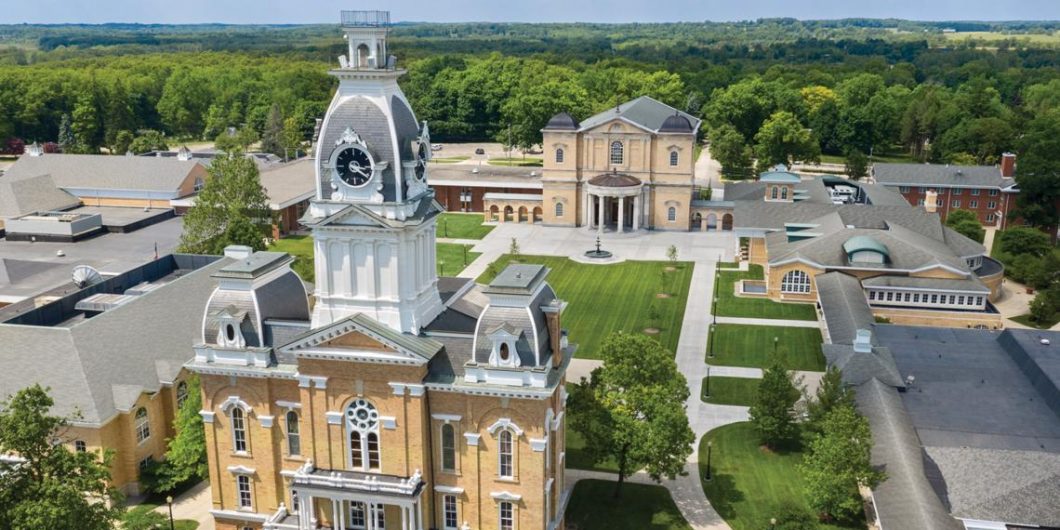The Times is doubling down on the policies and cultural attitudes that led to the improbable victory of Donald Trump.
The Utility of the Liberal Arts
Every liberal arts student has been asked, at least once, by a well-meaning but skeptical relative at Thanksgiving: What are you going to do with your degree? It’s a scrutiny that never seems to land upon siblings and friends with more, shall we say, practical majors.
A student will be quick to reassure a concerned aunt that his major will allow him to go to law school, become a teacher, or help him to develop critical thinking skills. Universities, too, reassure parents that the liberal arts will teach students to read and write well, make them “better people” who are “well-rounded” and “more human,” and prepare them for further education.
Inside the hallowed walls of the academy, however, the question receives its own philosophical response. Yes, the liberal arts will make students good and capable employees, but the practical justifications of the major are largely irrelevant, imputing the taint of the artes serviles to the ivory tower of liberal inquiry. A bit of superiority can’t help but creep in when scholars speak of education for education’s sake, of contemplation as the highest human capacity, of inquiry untrammeled by financial concerns.
But these lofty arguments—though not meritless—don’t satisfy a curious relative’s skepticism, nor do they address the realities of education in America, a nation that Tocqueville believed would “habitually prefer the useful to the beautiful.” Acting as coroner, John Agresto carries Tocqueville’s insight into our time and candidly assesses the state of the liberal arts in American education in his new book The Death of Learning: How American Education Has Failed Our Students and What to Do About It.
The heart of Agresto’s critique is that the liberal arts has lost its sense of purpose and promise. While Allan Bloom presented relativism as the modern classroom menace in his Closing of the American Mind, Agresto’s book recognizes that the barometer has shifted: students who once abandoned truth (superficially, at least) now cling to the truth-claims of the radical left. Where the liberal arts once presented a sweeping vision of the West’s intellectual tradition, students and educators have bankrupted the discipline, destroying its identity in pursuit of identity politics.
At the modern university, the liberal arts have decayed—not by accident or neglect, but from “self-inflicted wounds that look a bit like suicide,” Agresto notes. Rather than suffering external attacks, the academy itself dismantled the liberal arts after caving to demands for diversity. Bolstered by the growing political push for diversity, educators and students alike capitalized on cultural momentum to refashion the liberal arts for the new era of identity politics.
While students once received an education dedicated to the liberation of the mind and the pursuit of truth through the great books of Western civilization, they now receive indoctrination contaminated by specialization, identity politics, and an academic allergy to tradition. Throughout this shift, Agresto argues, the liberal arts lost their ability to speak convincingly about themselves, leaving students (and their concerned parents) with banalities about becoming “more human” through coursework in English—or at least more prepared for the GRE.
In his analysis, Agresto identifies the espousal of identity politics by liberal arts departments as a key cause of death for the discipline. Students and professors became increasingly concerned with the identities of authors rather than their minds, conceiving of diversity in physical—rather than ideological—terms. Yet, Agresto notes, “This growing understanding of diversity as separation was hardly broadening, hardly liberal, and thoroughly political. […] What began with the rhetoric of expansion soon became the politics of smallness.”
With the increased politicization of liberal arts departments, the canon became fodder for reformers seeking to reconstruct the liberal arts as a reflection of contemporary liberal values, as demonstrated by the revision of Stanford’s Western Civilization course in the 1980s. In liberal arts departments across the nation, authors widely respected (and widely read) by previous generations were forced out of the canon on account of views deemed sexist, racist, homophobic, religiously intolerant, hypocritical, or patriarchal—to name a few criteria for condemnation.
So, as English departments replaced Shakespeare and Milton with classes in queer, feminist, or post-colonial literature, parents with common sense began to question whether the education was really worth the money, even as academics continued to insist on the transformative power of the liberal arts.
As the academy pulled apart the bricks of its ivory tower with their faith in the supremacy of modern mores, the liberal arts died by suicide. But where the academy has strewn bricks, Agresto takes up the mantle of masonry. The liberal arts are dead, he argues—but they can be restored. The recovery of the discipline cannot “rely on the bromides and formulas of the past” but must instead address the utility of the liberal arts in civil society. This is necessary work.
The Death of Learning both reveals the cause of death and envisions a path to life for American higher education.
Agresto’s contribution to the restoration of the liberal arts is foundational: where the liberal arts have lost the ability to articulate their own value and purpose, Agresto provides the language with which to speak about a liberal arts education. He retethers the liberal arts to the common good, restores them to synonymy with the cultural inheritance of western civilization, and reframes education as a project for both the mind and the heart.
The liberal arts, rightly understood, produce true freedom of thought, facilitate genuine multiculturalism, and establish the necessary conditions for the political system envisioned by the Founders.
Unlike so many academics, Agresto does not shy away from a defense of the liberal arts based on their utility. The Death of Learning is not a philosophical treatise. Unlike high-minded musings about the artes liberales, Agresto justifies the liberal arts with convincing simplicity accessible to the high school students he addresses in one of the book’s appendices.
The liberal arts are useful, Agresto writes, because they facilitate freedom of thought. Through immersion in the liberal arts, Agresto writes, “We are less likely to be ruled by slogans or unexamined opinion, less likely to be moved simply by emotion or by demagogues.” Plato—and authors like him—offer freedom from the proverbial cave. The proper exercise of this freedom relies upon an accurate understanding of the world and of human flourishing. The liberal arts do not hone “critical thinking skills” so much as they shape imagination, Agresto argues.
Critical thinking, he writes, “is in many ways the less strident brother of smashing all conventions or dethroning all idols.” By offering a rich menu of ideas, the liberal arts establish wonder, not criticism, as the basis for thought. Critical evaluation naturally follows, but without basis in a marvelous curiosity, “critical thinking” merely becomes a duplicitous term for confirmation bias. Wonder, however, “leads us to ask, to seek, and to try to understand,” Agresto writes.
And, Agresto argues, the liberal arts education—like Western civilization—is inherently multicultural, drawing together various schools of thought from different, if geographically close, cultures. It is an education that engages students with their own cultural inheritance while naturally exposing students to unfamiliar lines of thought. Variety of philosophies and paradigms in the western tradition offer students a depth and breadth of knowledge and inform the free inquiry through which they engage the central questions of human life. Multiculturalism, thus understood, presents a multitude of perspectives so that students can engage more fully in what René Descartes called the “conversation with the most cultivated minds of past centuries.” Without losing sight of distinction and difference, the liberal arts seek unity and wholeness, achieving multiculturalism far better than identity politics ever could.
Understood in this light, the liberal arts have evident relevance to the political order. But, Agresto argues, they are not just useful but necessary in the American regime. In Federalist 10, James Madison warns that democracy is historically prone to the disease of ignorance, which cannot be remedied by constitutional government. Agresto notes: “A rich, broad, and liberal education would be the foremost remedy. And not only for our leaders but, just as important, for all of us who choose our leaders.” By cultivating free inquiry and the discernment of truth from falsehood, the liberal arts nurture self-government, freeing citizens from the “slogans and untutored opinions of those around us” and giving “greater insight into matters of great importance.”
Here, Agresto neglects to mention the value of the classroom experience in the cultivation of citizenship. At their best, the liberal arts teach students how to formulate substantive opinions, how to disagree, and how to convincingly express their views. Operating on the premise that there is something to be learned from the great authors of the past, seminars form habits of respectful debate, rigorous argumentation, and curiosity about opposing viewpoints. Simply put, the liberal arts emphasize the communal aspects of education rather than simply the individual pursuit of knowledge. These habits transfer to politics, fostering civic virtue.
Agresto’s practical proposals for this restoration of the liberal arts are modest but vital: restore the Western canon to curricula, support university leadership willing to defend traditional liberal education, and direct donations towards programs actively working to preserve and restore the liberal arts. None of these tasks, he recognizes, are easy. All require great patience and dedication. But these tasks are also manifestly appealing to both faculty and donors, as evidenced by the success of Hillsdale College, among other institutions pioneering the recovery of American higher education.
As identity politics remains entrenched in the current American regime, the death of the liberal arts is simultaneously ironic, dangerous, and cause for hope. Ironic and dangerous because the very means of cultivating freedom of thought among citizens has become a machine for instilling the regime’s values. But a cause for hope because, as Agresto notes, a robust conception of the liberal arts inherently balks against the illiberality of contemporary education. Without shrinking from the morbid realities of higher education, Agresto’s Death of Learning both reveals the cause of death and envisions a path to life.



